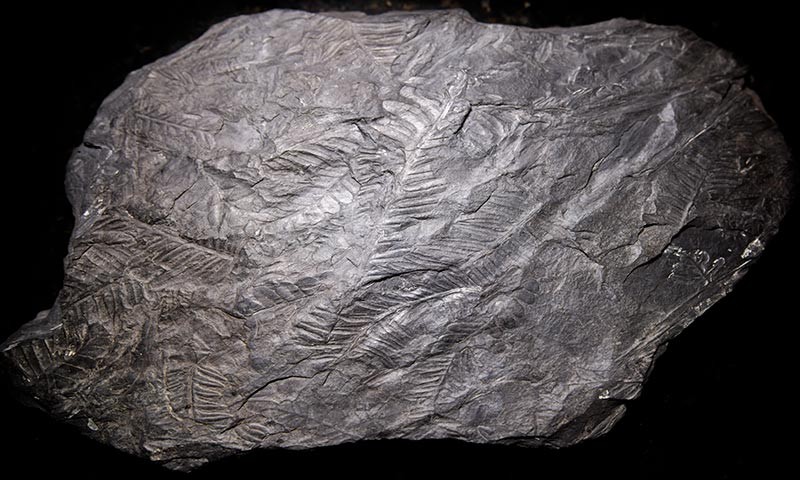Recently, I’ve been learning about ancient forests. This started when a teacher I met at an educators’ conference gave me a chunk of shale covered in fern fossils from the Llewellyn formation in Pennsylvania. He had picked it up – one of a bucket of shards – at a closed coal mine now popular as an off-road ATV site. I shared this treasure with my son; we traced the patterns with our fingers; held a flashlight to its surface to reveal the feathery edges of fronds pressed into mud some 300 million years ago.
It’s astonishing to hold such an ancient scene in one’s hands, and gratifying, too, to see how this one artifact has sparked so much curiosity in my child. We’ve made forays into the woods to find ancient plant types – ferns, mosses and equisetum, which we collected as fodder for his stuffed brachiosaurus. Supplied with copious Scotch tape and computer print-outs, we’ve decked our Christmas tree and halls with creatures that roamed the woods tens of millions of years before the age of reptiles – pederpes and dimetrodons, man-sized millipedes, and giant meganeura dragonflies.
All this, inevitably, has led to deeper explorations – including unanswerable questions about how life began, and a recounting of today’s winter solstice nativity tale – that moment when, science tells us, a celestial interloper knocked young Earth off her axis and created seasons.
I don’t consider myself especially religious, but there are times when (riffing off a famous quote by Carl Sagan) it seems more than a coincidence, this amazing good fortune to live in a universe where so much is unknown, yet knowable. How lucky we are for the richness and beauty of nature, our capacity for wonder, and each other’s good company. On this darkest day, at the end of a year that has held many challenges, let’s remember our blessings. And cherish them.



Discussion *